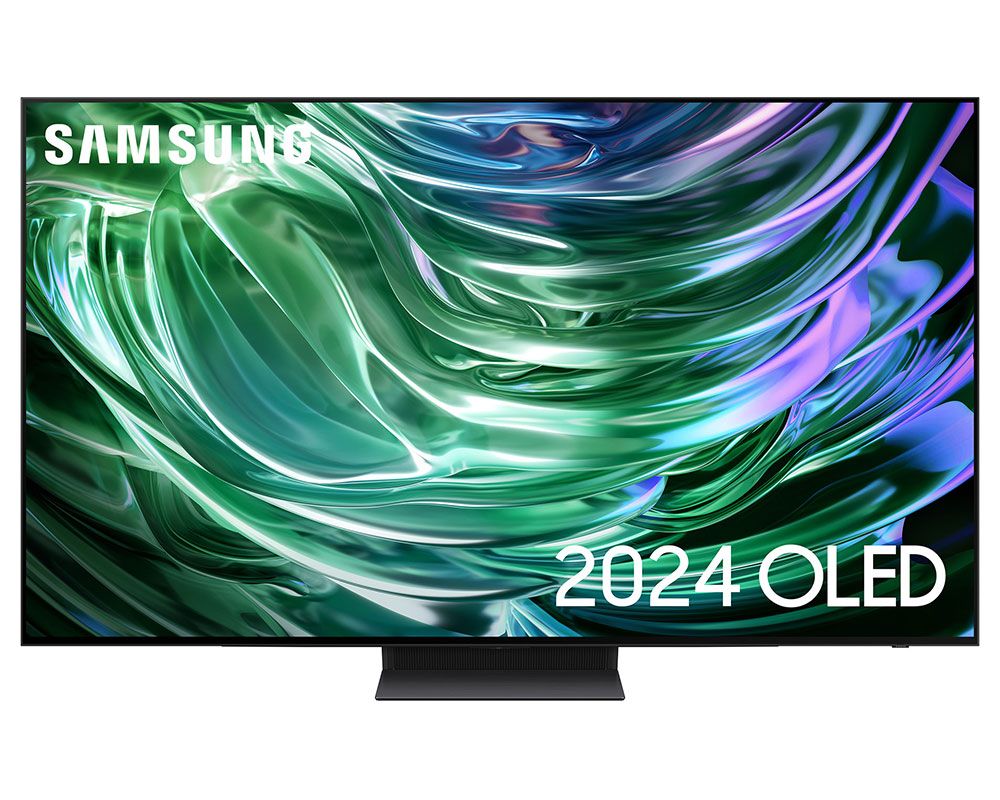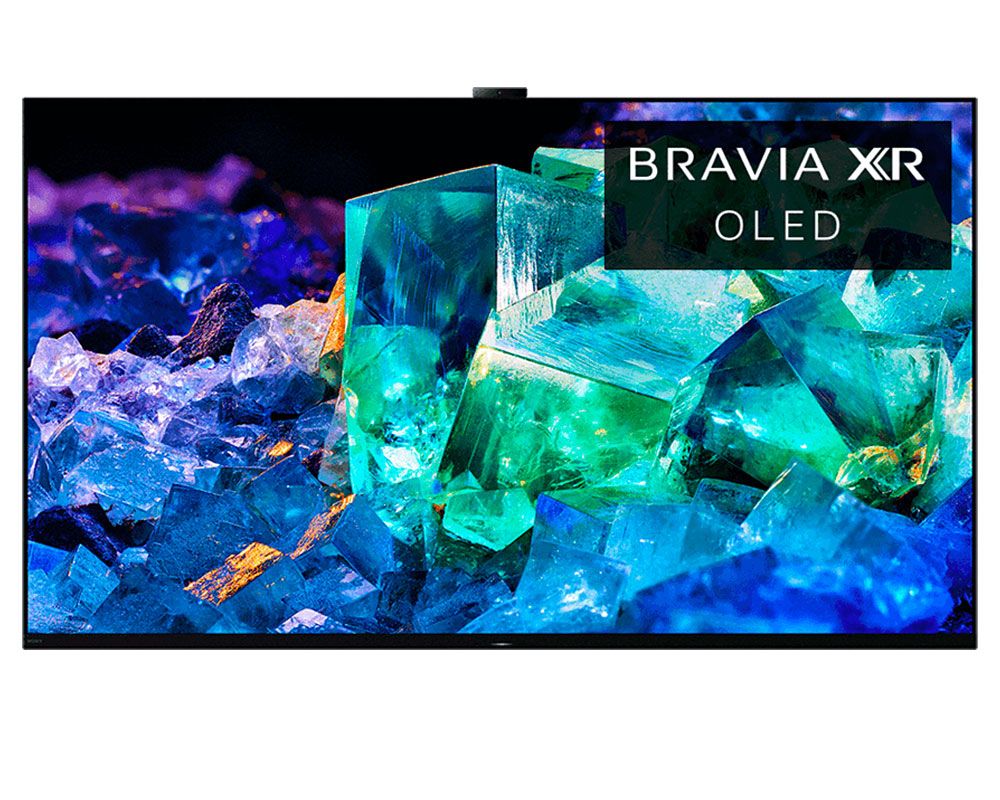Is an OLED TV worth it? | Benefits, drawbacks and more
When it comes to buying a new television, OLED TVs hold a reputation as the gold standard in TV display. With a sleek, high-tech design, OLED TVs promise exceptional picture quality and modern features that can enhance the viewing experience. However, OLED TVs are often pricier than other models, so you might be wondering whether an OLED TV is worth it.
Here, we’ll break down the key benefits and limitations of OLED TVs, helping you understand who should consider this investment and whether it’s the right choice for your viewing habits.
- What makes an OLED TV special?
- Who is an OLED TV ideal for?
- OLED TV: Pros and cons
- Why choose Crampton and Moore?
- Frequently asked questions
Read the key benefits of an OLED TV and what sets it apart from other options.
Read whether an OLED TV may be suitable for you.
Find out more about the pros and cons of OLED TVs.
Read the key benefits of buying your OLED TV from Crampton and Moore.
We answer common queries on OLED TVs.
What makes an OLED TV special?
Superior picture quality
One of the key features of OLED TVs is their exceptional picture quality. Unlike traditional LED and LCD TVs that rely on backlighting, OLED panels use self-lighting pixels that emit their own light. This means each individual pixel can turn on or off independently, allowing for perfect blacks and an infinite contrast ratio. The result is a picture with stunning depth and incredible detail. Whether you're watching movies, sports, or gaming, the visual clarity and contrast of OLED technology is unparalleled.
Eye-friendly technology and reduced blue light emissions
OLED TVs set themselves apart by combining stunning picture quality with eye-friendly technology, thanks to their unique self-emissive pixel design. In darker scenes, this eliminates the "grey" haze often seen on LED or LCD screens, delivering an accurate and immersive visual experience.
Are you looking for superior picture brightness for a cinematic experience?
This same pixel-level precision also contributes to reduced blue light emissions, a significant benefit for eye comfort. Unlike backlit TVs, OLED displays produce vibrant colours and deep blacks without over-reliance on intense blue light, which can disrupt sleep and strain your eyes during extended viewing. Many OLED models meet strict standards for low blue light, making them a healthier choice for evening use and long-term viewing.
Sleek, ultra-thin design
OLED TVs are not only known for their picture quality but also their sleek, ultra-thin designs. Without the need for a bulky backlight, OLED screens can be made incredibly thin, allowing the TV to blend seamlessly into your home décor. This minimalist design is a huge draw for those who want a TV that doubles as a piece of modern, stylish furniture. If you are design-conscious and want a sleek design, an OLED TV may be perfect for you.
Ideal for movies, sports and gaming
OLED technology excels in diverse viewing scenarios. For movie lovers, the contrast and rich colours deliver a cinematic experience that rivals commercial theatres. Sports fans will appreciate the minimal motion blur and smooth visuals during fast-paced action. Additionally, gamers will benefit from OLED's low input lag and fast response times, providing an edge in competitive gaming with minimal delay.
Who is an OLED TV ideal for?
OLED TVs are a premium choice, but who are they ideal for? Here are the types of viewers they may be particularly suitable for:
Home cinema enthusiasts
For those who prioritise stunning visuals and immersive entertainment, OLED is an excellent choice. The exceptional picture quality makes watching movies an extraordinary experience. If you're setting up a home cinema system and want a TV that will make your movies come to life, an OLED TV will not disappoint. Shop our home cinema equipment here.
Gamers
Gamers are increasingly turning to OLED TVs for their low input lag and fast response times. With the rise of high-speed gaming consoles like the PlayStation 5 and Xbox Series X, an OLED TV ensures that the visuals are as smooth as the gameplay. If you want to elevate your gaming experience with the sharpest detail, stunning colour accuracy, and minimal motion blur, OLED is the technology you need.
Want the best colour accuracy for your TV? The Sony XR-65A95K QD-OLED is renowned for its stunningly vibrant and precise colour range, perfect for movies, sports, and gaming.
Design-conscious buyers
For those who care as much about aesthetics as they do about performance, OLED's ultra-slim design is a major selling point. The TV’s minimalist profile makes it a perfect addition to modern homes where style and function are equally important. OLED TVs are more than just a viewing device; they can be a sleek, eye-catching focal point in your living room or entertainment space.
Are you looking for a Samsung OLED TV? Shop our range of Samsung OLED TVs here.
Sports fans
Watching sports on an OLED TV brings the action to life. The technology’s minimal motion blur makes it ideal for watching fast-paced sports like football, basketball, or motorsports. The clarity and smoothness of OLED TVs ensures that you won’t miss a moment of the game.
Shop our complete range of OLED TVs here.
Exploring the pros and cons of OLED TVs
As with any product, OLED TVs come with both advantages and drawbacks. Understanding these can help you decide whether an OLED TV is the right investment for you.
What are the key benefits of OLED TVs?
- Unmatched picture quality: The infinite contrast ratio and deep blacks give OLED TVs an unmatched level of image quality.
- Wide viewing angles: OLED technology maintains its colour accuracy and brightness from nearly any angle, making it perfect for rooms with multiple seating areas.
- Ultra-slim designs: OLED TVs are incredibly thin and lightweight, which adds to their aesthetic appeal and makes them easy to mount on the wall or place on furniture.
- Fast response times: Ideal for gaming, OLED offers fast response times with virtually no motion blur, providing a smoother and more responsive experience.
What are the potential drawbacks of OLED TVs?
Though OLED TVs offer excellent advantages and provide outstanding quality, you should also be aware of potential drawbacks:
- Higher price point: OLED TVs are significantly more expensive than LED and QLED models, making them a premium purchase.
- Small risk of burn-in: Although OLED TVs are much less prone to burn-in than earlier models, there’s still a small risk of permanent image retention with static content displayed for extended periods, such as news channels or video game HUDs. However, this risk is minimal and is becoming less common with modern designs.
- Limited peak brightness: While OLED TVs excel in a dark room, they do not achieve the same peak brightness levels as QLED TVs, which makes them less ideal for very bright rooms.
Shop our full selection of OLED TVs here.
Comparing OLED to other TV technologies
To help you decide whether an OLED TV is right for you, here’s how OLED TVs compare to other options:
QLED TVs
QLED TVs are brighter than OLEDs, making them a better choice for rooms with a lot of ambient light. However, QLED displays cannot achieve the same level of deep blacks and contrast as OLED, which means they may not deliver as immersive a viewing experience, especially in darker environments.
LED and LCD TVs
LED and LCD TVs are typically more affordable than OLEDs but have lower contrast ratios and less vibrant colours. While they’re suitable for most casual viewers, they won’t offer the same level of picture quality and immersive experience as OLEDs. LED and LCD TVs are better suited for those on a budget who don’t mind compromising on visual fidelity.
OLED panels also provide wider viewing angles compared to LCD and LED panels. This means that the colours and brightness levels of OLED panels remain consistent even when viewed from extreme angles. In contrast, LCD and LED panels may suffer from colour shifts and reduced image quality when viewed off-axis.
MicroLED TVs
MicroLED is an emerging TV technology that offers many of the benefits of OLED, such as perfect blacks and vibrant colours, without the risk of burn-in. However, MicroLED TVs are still in their infancy and come with an even higher price point than OLED, making them an impractical choice for most consumers at this stage.
Why choose Crampton and Moore?
When it comes to upgrading your TV, Crampton and Moore stands out as the trusted choice for premium quality and unbeatable value. Offering a wide range of top-tier OLED televisions from renowned brands, we combine the best technology with competitive pricing to suit every budget. Our commitment to customer satisfaction shines through expert advice, tailored recommendations, and a seamless shopping experience. With a reputation built on decades of excellence, Crampton and Moore ensures you enjoy a hassle-free journey to the best-quality viewing.
Shop our complete range of OLED TVs here.
Frequently asked questions on OLED TVs
What does OLED stand for?
OLED stands for Organic Light Emitting Diode. It’s a technology that uses organic compounds to create light when an electric current is applied.
Why are OLED TVs so expensive?
OLED technology requires sophisticated manufacturing processes and advanced materials, which makes the production cost higher compared to other TV technologies.
How long does an OLED TV last?
An OLED TV can typically last up to 100,000 hours of use before its brightness starts to noticeably fade. However, this depends on factors such as usage habits and the quality of the TV.
Is OLED better for gaming?
OLED’s low input lag, fast response time, and vibrant visuals make it ideal for gaming.
Do OLED TVs suffer from burn-in?
While there’s a small risk of burn-in, most modern OLED TVs have features that mitigate this issue, such as screen savers and pixel-shifting technology.
Are OLED TVs worth it for casual viewers?
It depends on your budget and viewing habits. If you don’t mind spending more for exceptional picture quality, then OLED is definitely worth it. However, casual viewers may not require the advanced features that come with the best TVs.




